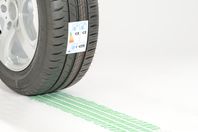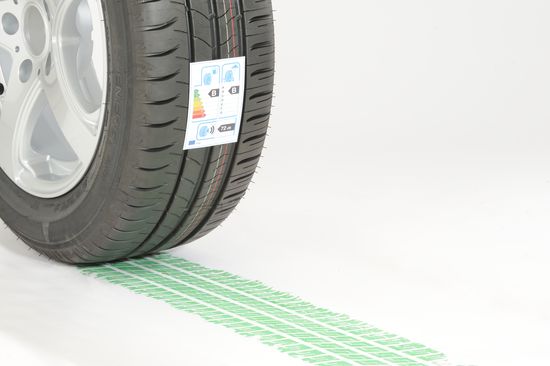Asia
EMEA

LANXESS Canada Contacts
Contact our Sites in Canada
Media Inquiries
General Inquiries
Please click here to e-mail LANXESS Canada with product inquiries and general requests.
Global Press Releases
2014-02-24
LANXESS a success at Tire Tech and Expo 2014 in Cologne
The complete range of tire technology
“The trend clearly is heading toward increasingly high-quality tires that help automotive OEMs to cut fleet fuel consumption and thus achieve CO2 reduction targets – and consumers to save on fuel costs. And it all is largely thanks to performance rubber products and know-how from LANXESS.” This is the conclusion the pioneer of synthetic rubber came to after its appearance at this year's Tire Technology Expo in Cologne. Experts from LANXESS and the LANXESS Rhein Chemie Rheinau GmbH business unit played a significant role in the conference, presenting a wide range of papers. At its stand, Rhein Chemie, which celebrates its 125-year anniversary in 2014, simultaneously served as a highly frequented contact point for questions on both the presentations and current products, such as Rhenowave, a new concept for the quality control of black rubber compounds, or LANXESS's new easy-processing NdBR rubber products that simplify the production of high-performance tires.
“As an experienced provider of high-performance tire rubber, we naturally know our partners in the rubber industry very well, and in turn are recognized by them as a competent collaborator. They include us early on in their development work,” says Christoph Kalla, head of marketing in LANXESS's Performance Butadiene Rubbers business unit. “Tire Technology Expo always gives us an excellent opportunity to expand these contacts and showcase our products in the right context. That will further accelerate the development of even more energy-saving 'green' tires. We believe our synthetic rubber grades can significantly lower the rolling resistance of the current generation of tires even more. At the same time, we are putting tremendous effort into making them easier to process.”
How that works was explained by LANXESS expert Heike Kloppenburg in her talk on easy processing (EZ) NdBR grades for high-performance tires: thanks to a modified macrostructure (keyword: long chain branching), these polybutadienes display improved mixing and extrusion properties, while still reaching the performance level of standard Mooney NdBR rubber grades, which in contrast are considered difficult to process on account of their high molecular weight. One essential factor in developing the new EZ grades was the detailed knowledge of the macrostructure of the rubber molecules, as determined by the LANXESS Polymer Testing Center using highly complex, rheological testing methods. These methods were the subject of a paper by Saeid Kheirandish.
Further presentations by LANXESS experts addressed new concepts in SSBR modification that can help to adjust the Mooney viscosity of rubber grades independent of their molecular weight (Norbert Steinhauser) and the performance enhancement brought about by functionalized SSBR rubber grades with respect to rolling resistance, abrasion, dry and wet grip in test tires with silica-filled treads (Alex Lucassen). Fernanda Albino discussed the opportunities modified LANXESS NdBR rubber offer for improving the processing characteristics of NdBR and SSBR rubber compounds used in energy-saving tires.
The round of talks on tire know-how from Mannheim was opened by Andreas Schröder from the LANXESS Rhein Chemie business unit, who is looking to take quality assurance in the fabrication of black rubber articles to a new level using inline ultrasound analysis in extrusion. His colleague Dietmar Hoff explained how the production of high-performance tires can be made more efficient by coating the bladders, while Jon Nienaber from Rhein Chemie Corp., United States, showed how the use of antioxidants in the tire side wall can be reduced by incorporating EPDM in the rubber mix. As he reported, the percentage of renewable raw materials in tires could even be increased by using ethylene propylene diene rubber, whose ethylene components are made from sugarcane (Keltan Eco from LANXESS). Finally, Rhein Chemie expert Cristian Oprisoni addressed the advantages of using polynorbornene rubber (PNR) as an additive in tire manufacturing. PNR typically has a high molecular weight and can absorb significant amounts of oil (up to 400 phr).
“The extremely broad range of topics we covered in these papers demonstrates the many fronts on which LANXESS employees are fighting to advance the development of modern, high-performance tires,” summarizes Christoph Kalla. “Tires are highly complex products, and LANXESS is active in every aspect of tire technology, from additives and high-performance rubber grades, to analytical rubber chemistry and tire testing. That makes us one of the most experienced partners in the industry both now and in the future.”
LANXESS is a leading specialty chemicals company with sales of EUR 9.1 billion in 2012 and roughly 17,500 employees in 31 countries. The company is currently represented at 52 production sites worldwide. The core business of LANXESS is the development, manufacturing and marketing of plastics, rubber, intermediates and specialty chemicals. LANXESS is a member of the leading sustainability indices Dow Jones Sustainability Index (DJSI) World and FTSE4Good as well as the Carbon Disclosure Leadership Index (CDLI).
- Gallery




